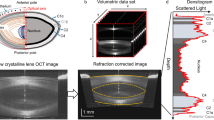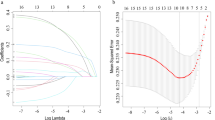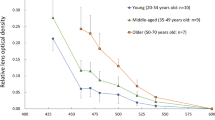Abstract
The age-related cataract development consequent upon a loss of the lens capsule barrier properties proved to be associated with accumulation of sodium, calcium, phosphorus and potassium. For the first time the use of spatial cluster and correlation analyses showed that the physical light scattering in the crystalline lens volume depends on changes in the lens matter elemental composition. The fields of elevated concentrations of sodium, calcium, phosphorus, potassium and chlorine conformed to the lens capsule geometry and their clustering was similar to that of opacity fields in the lens body. The accumulation geometry of the elements in the lens body that are commonly seen in the aqueous humor of the anterior chamber, can be considered evidence for excessive transitioning of their compounds through the lens capsule shell, while its spatial connection with transparency changes—proof of participation in cataractogenesis.

Similar content being viewed by others
REFERENCES
Duncan, G. and Bushell, A., Exp. Eye Res., 1976, vol. 23, no. 3, pp. 341–353. https://doi.org/10.1016/0014-4835(76)90133-0.
Hightower, K.R. and Dering, M., Invest. Ophthalmol. Vis. Sci., 1984, vol. 25, no. 9, pp. 1108–1111.
Goralska, M., Nagar, S., Colitz, C., Fleisher, L., and McGahan, M., Invest. Ophthalmol. Vis. Sci., 2009, vol. 50, no. 1, p. 305. https://doi.org/10.1167/iovs.08-2230.
Goralska, M., Fleisher, L., and McGahan, M., Invest. Ophthalmol. Vis. Sci., 2007, vol. 48, no. 9, p. 3968. https://doi.org/10.1167/iovs.07-0130.
Goralska, M., Nagar, S., Fleisher, L.N., and McGahan, M.C., Mol. Vis., 2009, vol. 15, p. 2404.
Ostrovskii, M.A., Fedorovich, I.B., El’chaninov, V.V., and Krivandin, A.V., Sens. Sist., 1994, vol. 8, nos. 3–4, pp. 135–146.
McCarty, C.A. and Taylor, H.R., Am. J. Ophthalmol., 1996, no. 37, pp. 1720–1723.
West, S.K., Duncan, D.D., Munoz, B., et al., J. Am. Med. Ass., 1998, vol. 280, pp. 714–718.
Delcourt, C., Carrier, I., PontonSan’chez, A., et al., Arch. Ophthalmol., 2000, vol. 118, no. 3, pp. 385–392.
Tyuzikov, I.A., Vopr. Dietol., 2017, vol. 7, no. 1, pp. 47–54.
Weinert, B.T. and Timiras, P.S., J. Appl. Physiol., 2003, vol. 95, pp. 1706–1716.
Author information
Authors and Affiliations
Corresponding author
Ethics declarations
Conflict of interests. The authors declare that they have no conflict of interest.
Statement of compliance with standards of research involving humans as subjects. The ethic norms and the laws of Russian Federation were observed. All procedures performed in studies involving human participants were in accordance with the ethical standards of the institutional and/or national research committee and with the 1964 Helsinki Declaration and its later amendments or comparable ethical standards. Informed consent was obtained from all individual participants involved in the study.
Additional information
Translated by A. Nikolaeva
Rights and permissions
About this article
Cite this article
Pakhomova, N.A., Borisenko, T.E., Novikov, I.A. et al. Bioinorganic Markers of a Loss of the Crystalline Lens Capsule Barrier Properties and Consequent Age-Related Cataract Development. Dokl Biol Sci 487, 98–100 (2019). https://doi.org/10.1134/S0012496619040070
Received:
Revised:
Accepted:
Published:
Issue Date:
DOI: https://doi.org/10.1134/S0012496619040070




